Abstract
In two experiments deviations from matching earned higher overall reinforcement rates than did matching. In Experiment 1 response proportions were calculated over a 360-response moving average, updated with each response. Response proportions that differed from the nominal reinforcement proportions, by a criterion that was gradually increased, were eligible for reinforcement. Response proportions that did not differ from matching were not eligible for reinforcement. When the deviation requirement was relatively small, the contingency proved to be effective. However, there was a limit as to how far response proportions could be pushed from matching. Consequently, when the deviation requirement was large, overall reinforcement rate decreased and pecking was eventually extinguished. In Experiment 2 a discriminative stimulus was added to the procedure. The houselight was correlated with the relationship between response proportions and the nominal (programmed) reinforcement proportions. When the difference between response and reinforcement proportions met the deviation requirement, the light was white and responses were eligible for reinforcement. When the difference between response and reinforcement proportions failed to exceed the deviation requirement, the light was blue and responses were not eligible for reinforcement. With the addition of the light, it proved to be possible to shape deviations from matching without any apparent limit. Thus, in Experiment 2 overall reinforcement rate predicted choice proportions and relative reinforcement rate did not. In contrast, in previous experiments on the relationship between matching and overall reinforcement maximization, relative reinforcement rate was usually the better predictor of responding. The results show that whether overall or relative reinforcement rate better predicts choice proportions may in part be determined by stimulus conditions.
Keywords: matching law, rational choice, maximizing, overall reinforcement rate, relative reinforcement rate, choice, concurrent variable-interval schedule, key peck, pigeons
Full text
PDF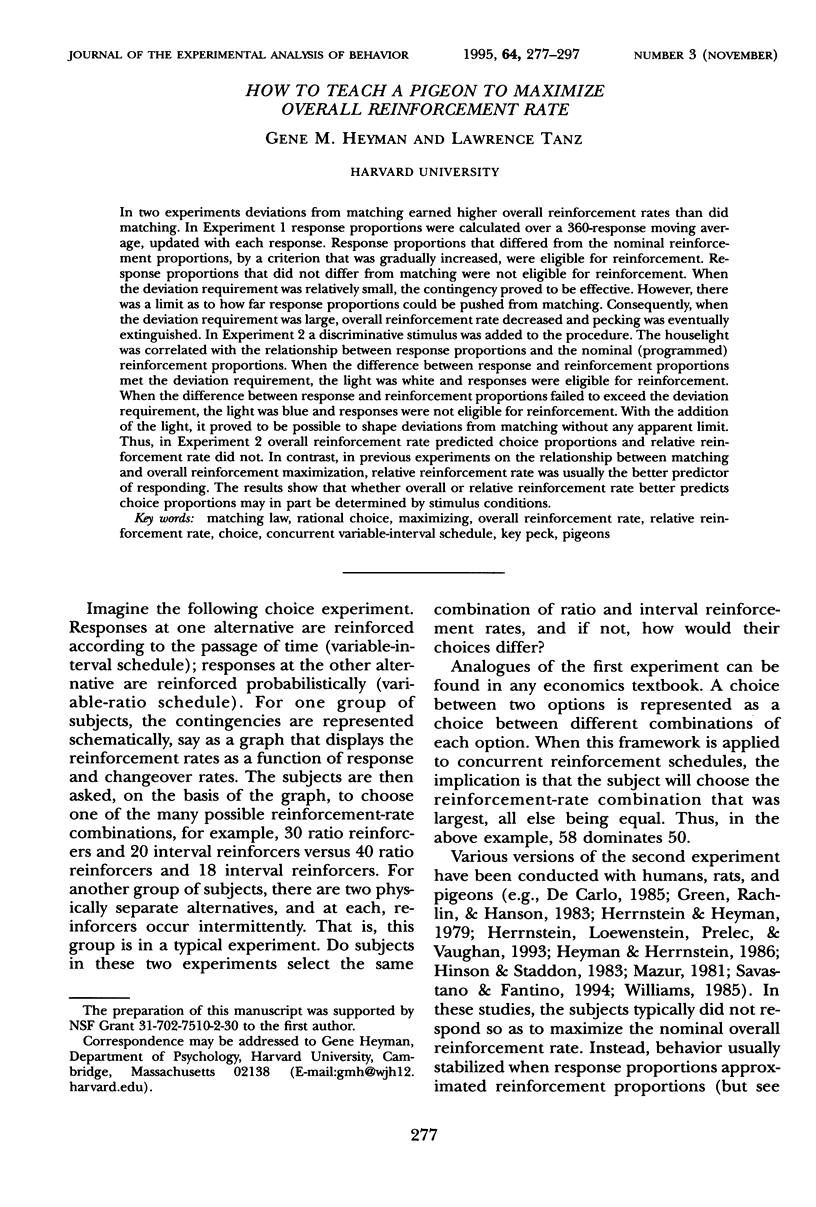
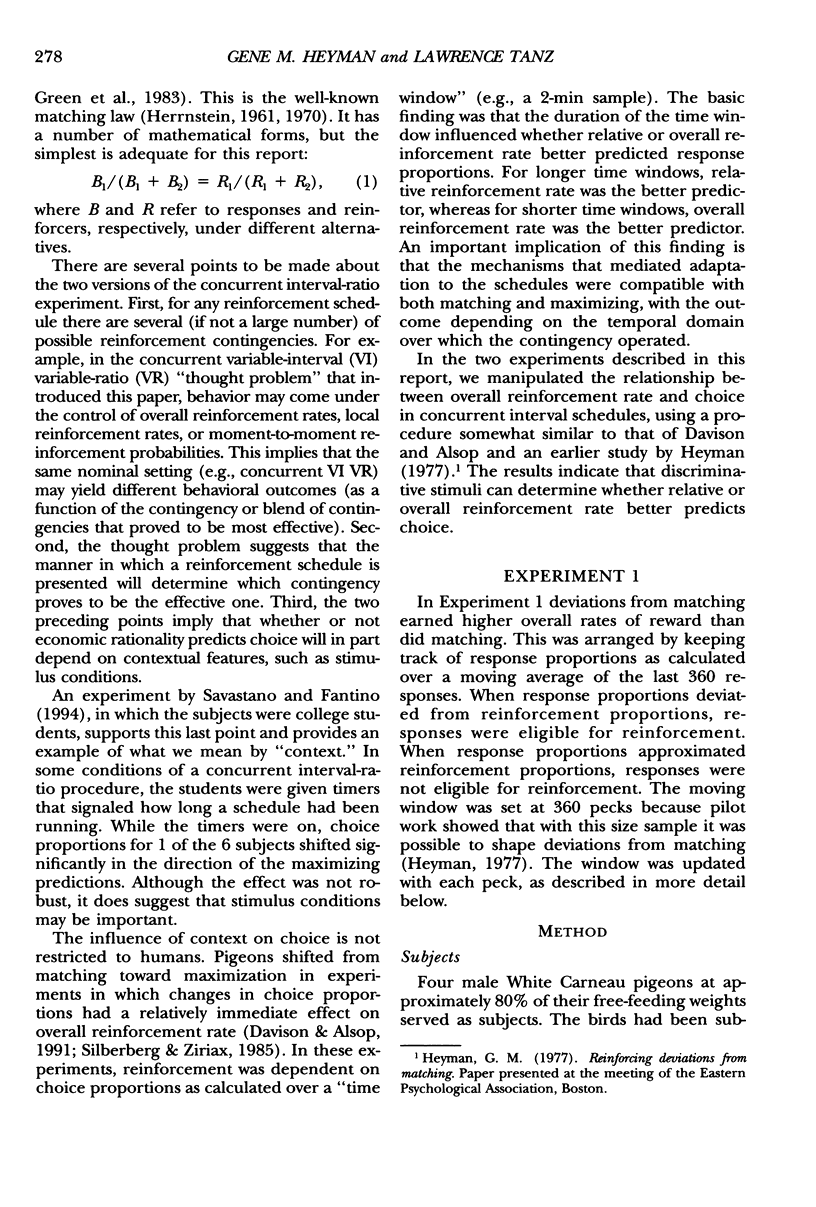

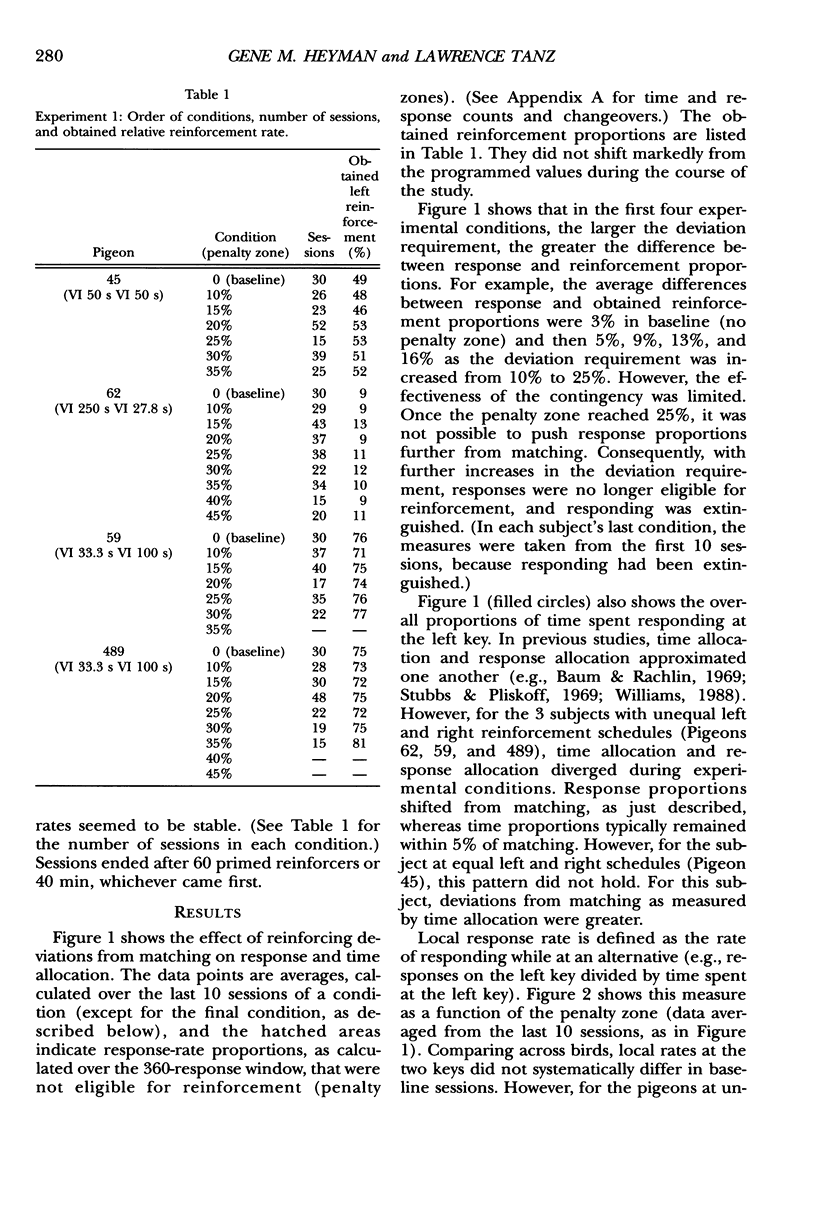
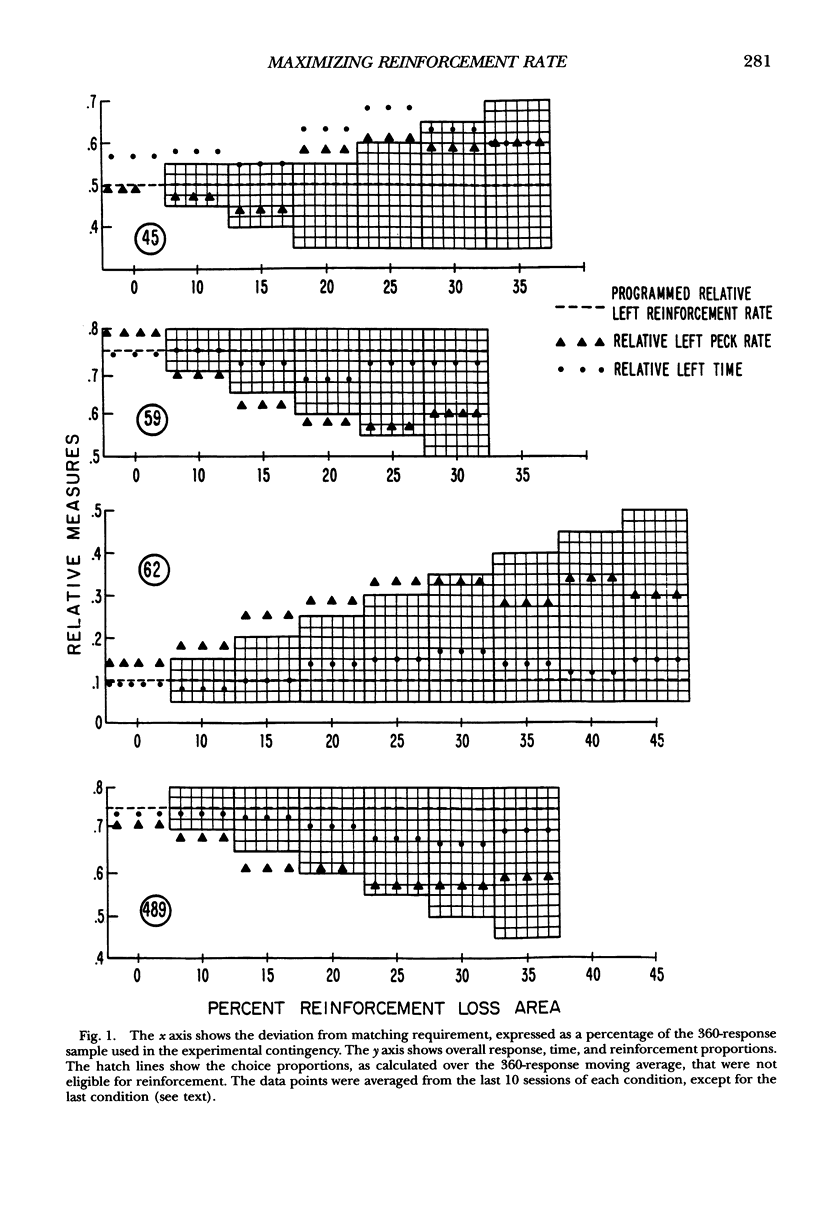
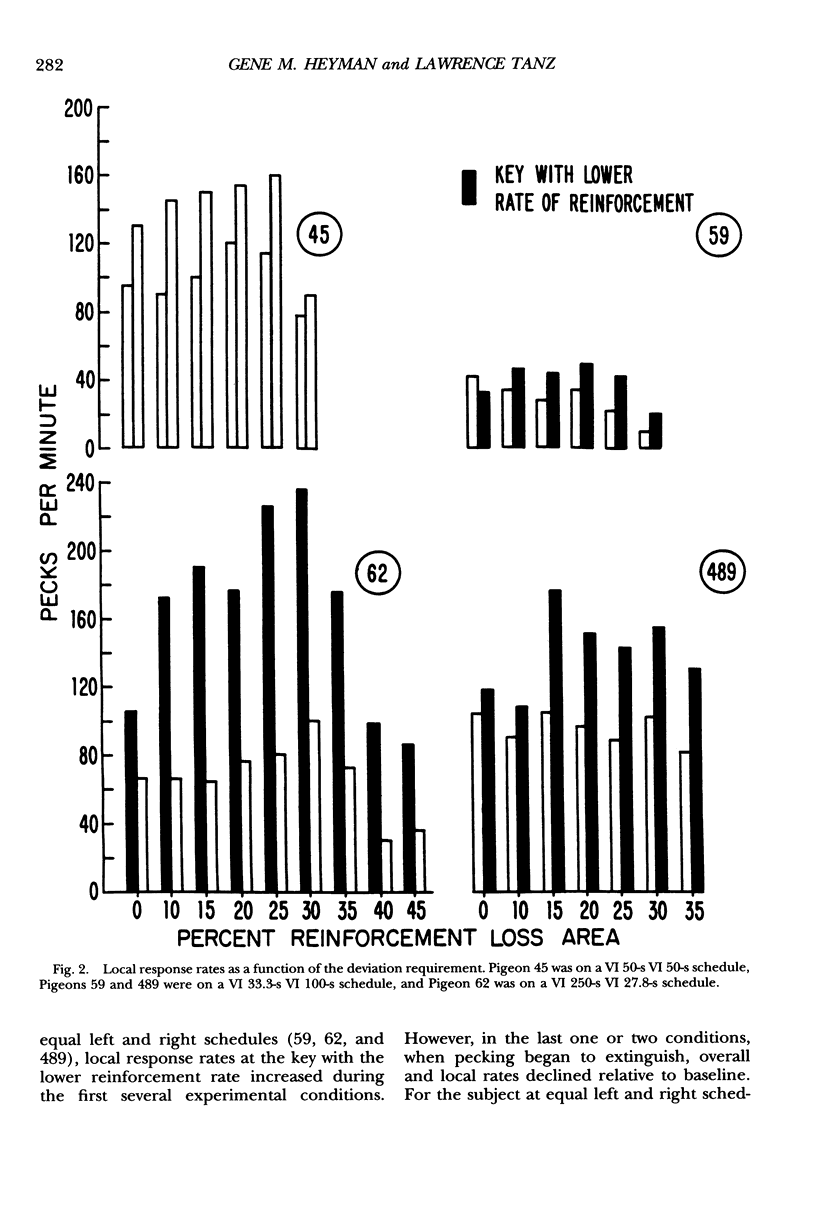

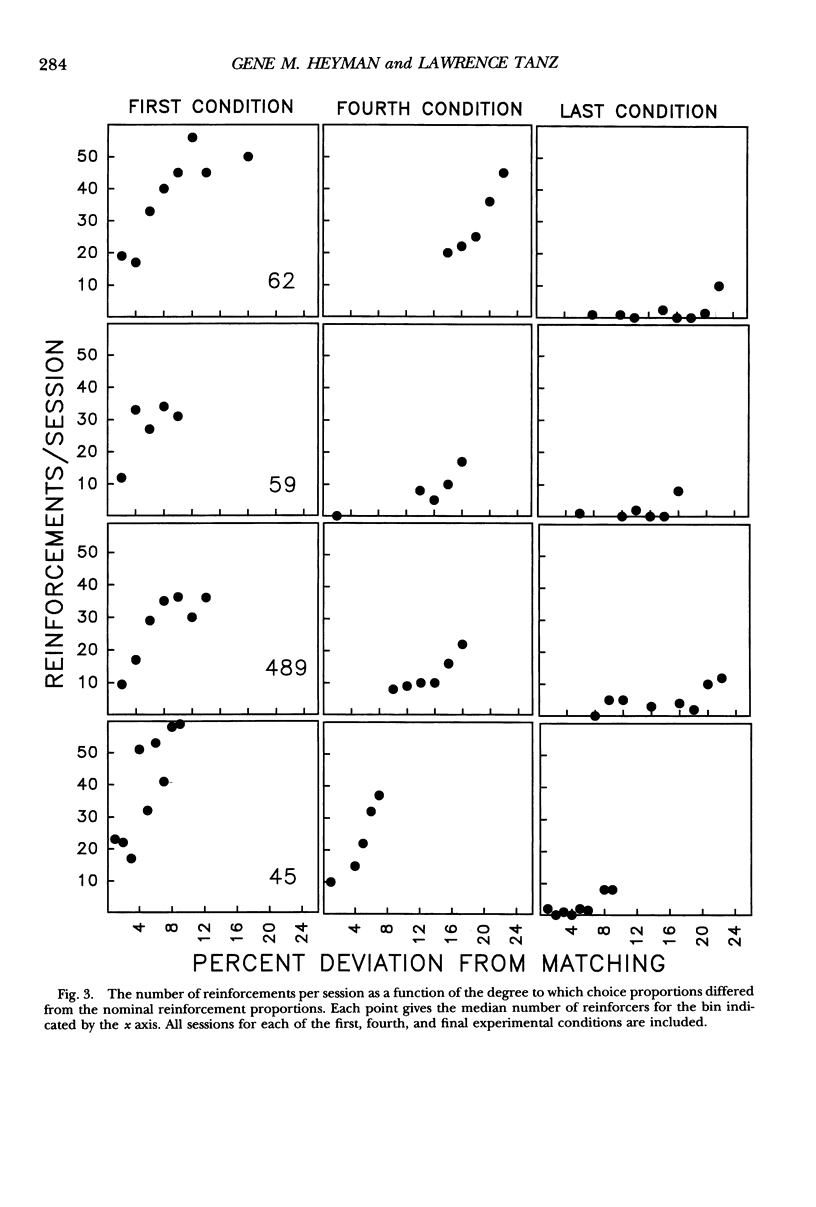
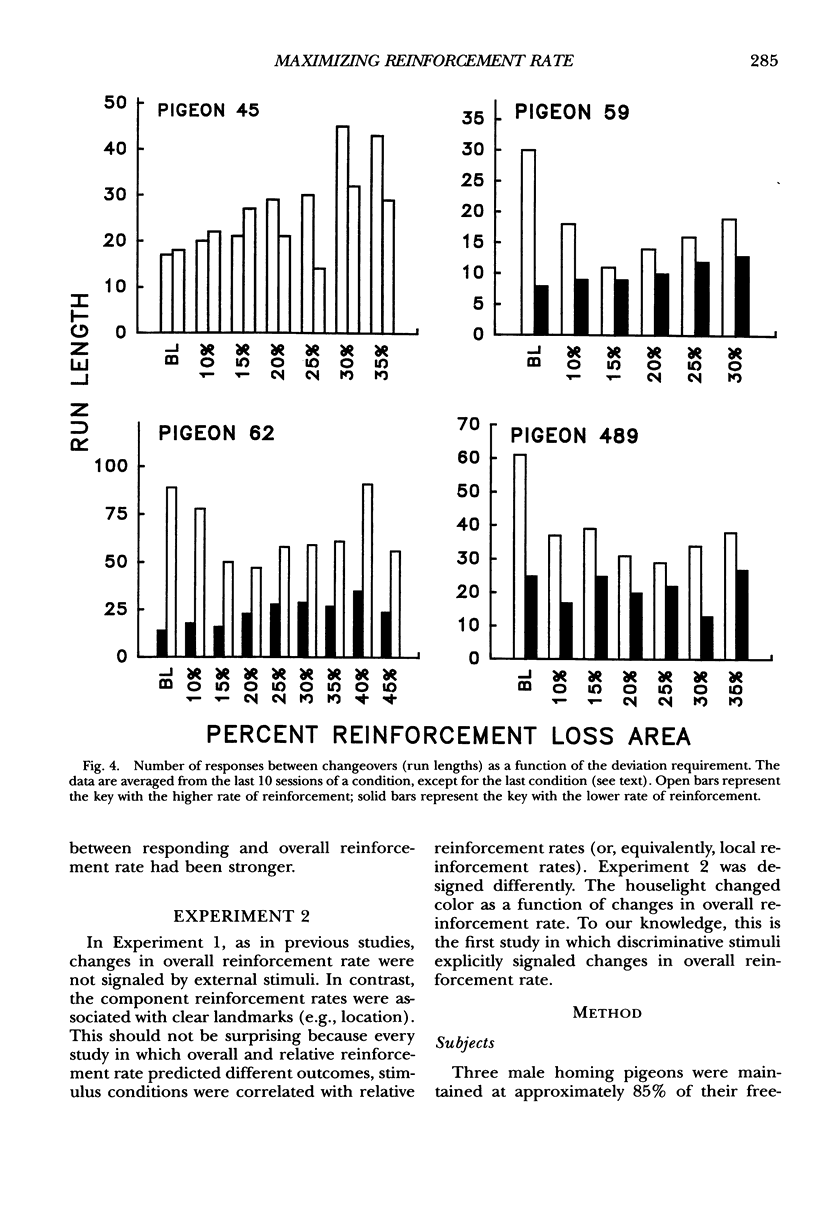




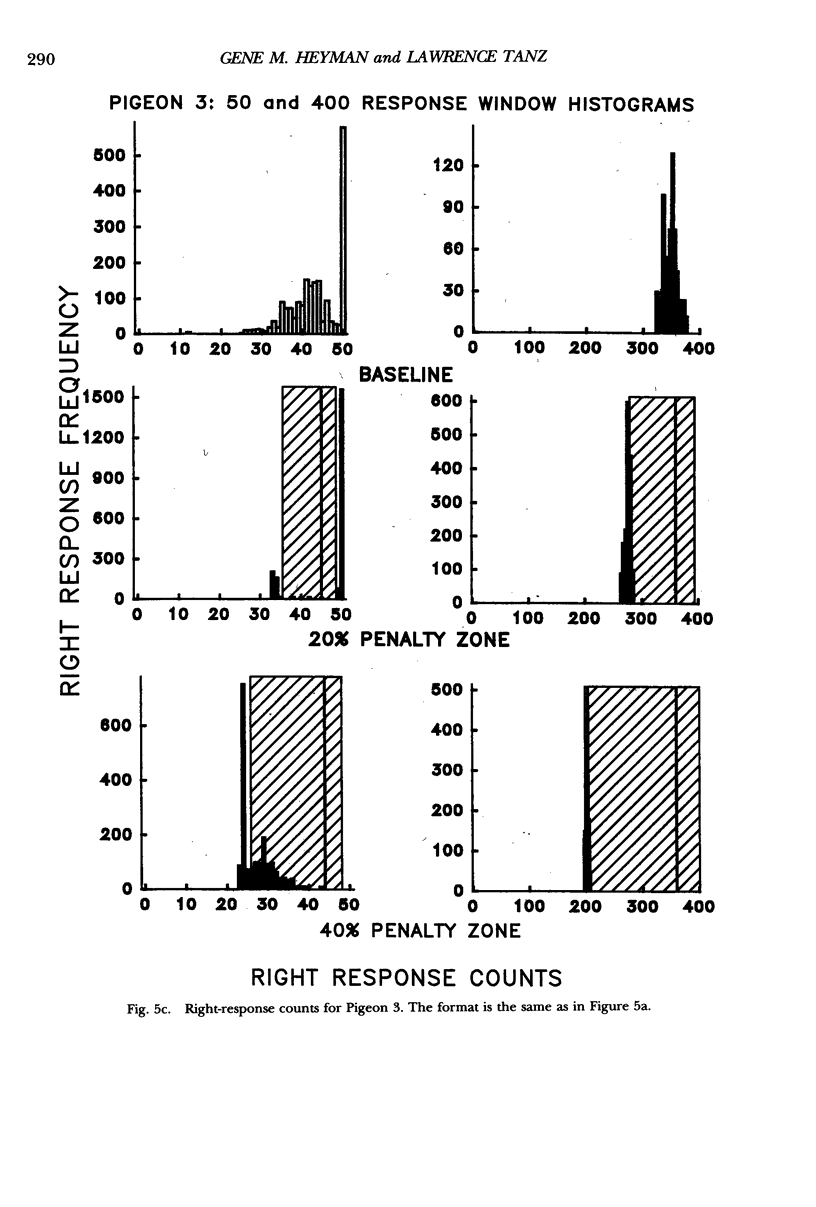

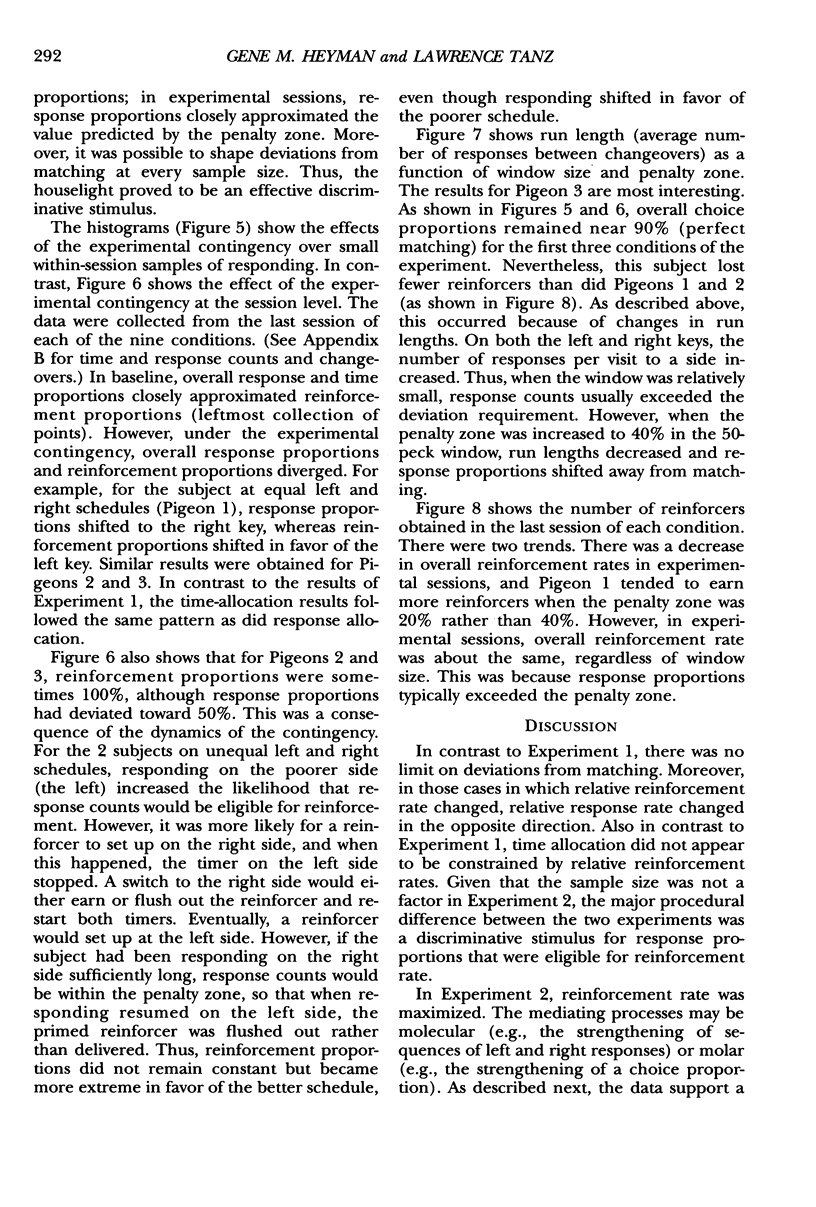

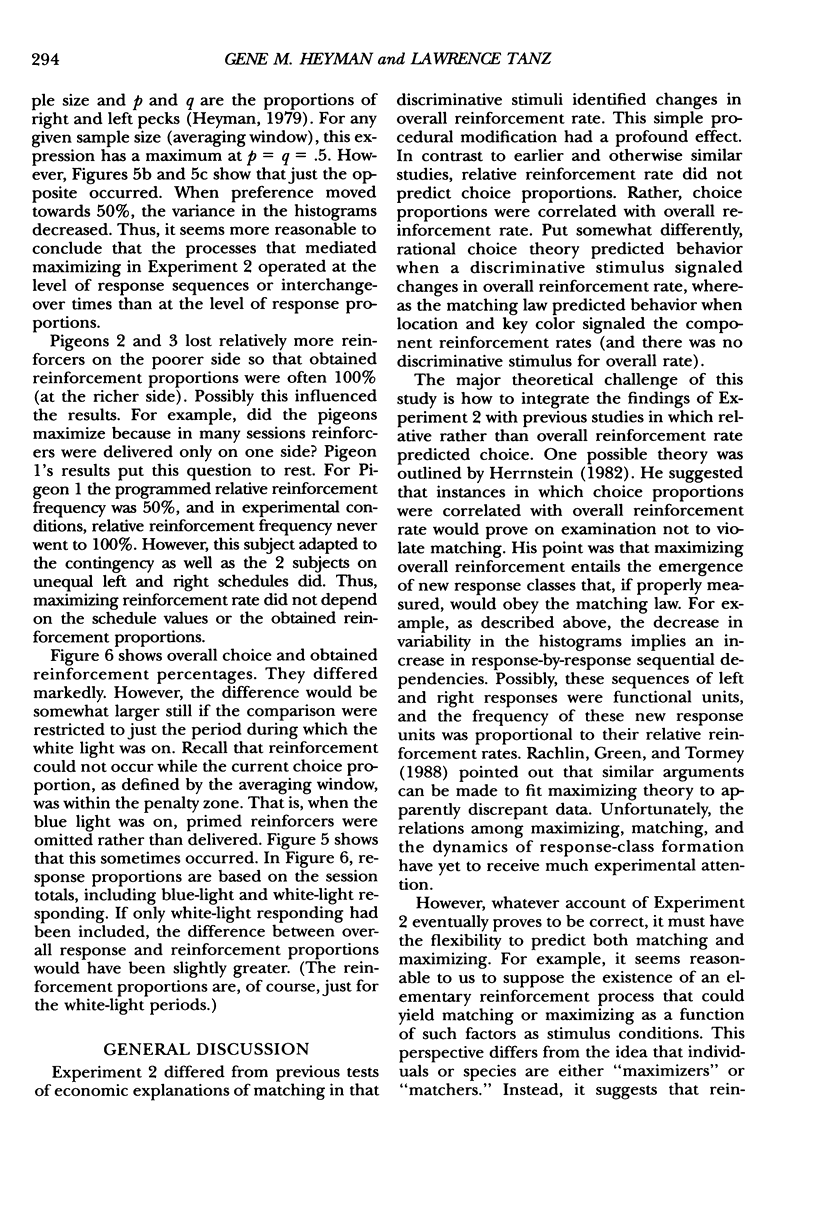
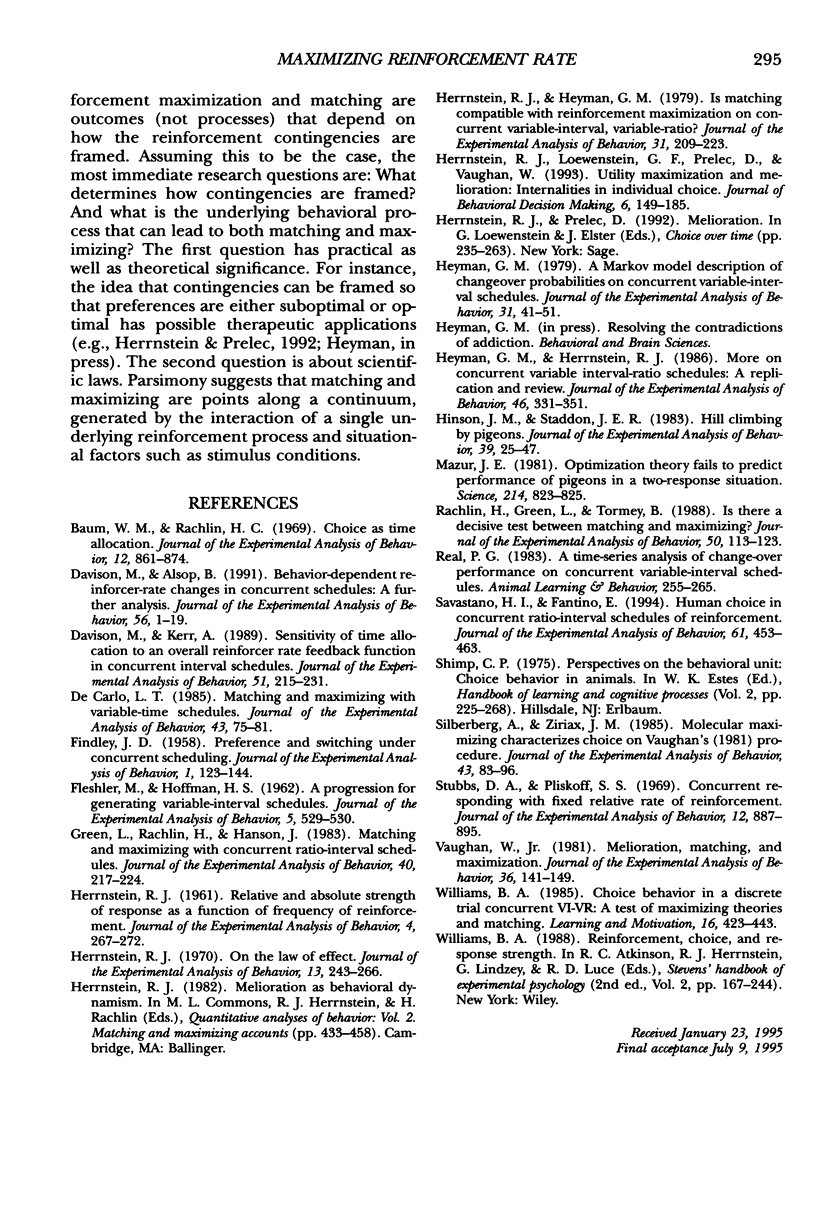


Selected References
These references are in PubMed. This may not be the complete list of references from this article.
- Baum W. M., Rachlin H. C. Choice as time allocation. J Exp Anal Behav. 1969 Nov;12(6):861–874. doi: 10.1901/jeab.1969.12-861. [DOI] [PMC free article] [PubMed] [Google Scholar]
- Davison M., Alsop B. Behavior-dependent reinforcer-rate changes in concurrent schedules: A further analysis. J Exp Anal Behav. 1991 Jul;56(1):1–19. doi: 10.1901/jeab.1991.56-1. [DOI] [PMC free article] [PubMed] [Google Scholar]
- Davison M., Kerr A. Sensitivity of time allocation to an overall reinforcer rate feedback function in concurrent interval schedules. J Exp Anal Behav. 1989 Mar;51(2):215–231. doi: 10.1901/jeab.1989.51-215. [DOI] [PMC free article] [PubMed] [Google Scholar]
- DeCarlo L. T. Matching and maximizing with variable-time schedules. J Exp Anal Behav. 1985 Jan;43(1):75–81. doi: 10.1901/jeab.1985.43-75. [DOI] [PMC free article] [PubMed] [Google Scholar]
- FLESHLER M., HOFFMAN H. S. A progression for generating variable-interval schedules. J Exp Anal Behav. 1962 Oct;5:529–530. doi: 10.1901/jeab.1962.5-529. [DOI] [PMC free article] [PubMed] [Google Scholar]
- Findley J. D. Preference and Switching under Concurrent Scheduling. J Exp Anal Behav. 1958 Apr;1(2):123–144. doi: 10.1901/jeab.1958.1-123. [DOI] [PMC free article] [PubMed] [Google Scholar]
- Green L., Rachlin H., Hanson J. Matching and maximizing with concurrent ratio-interval schedules. J Exp Anal Behav. 1983 Nov;40(3):217–224. doi: 10.1901/jeab.1983.40-217. [DOI] [PMC free article] [PubMed] [Google Scholar]
- HERRNSTEIN R. J. Relative and absolute strength of response as a function of frequency of reinforcement. J Exp Anal Behav. 1961 Jul;4:267–272. doi: 10.1901/jeab.1961.4-267. [DOI] [PMC free article] [PubMed] [Google Scholar]
- Herrnstein R. J., Heyman G. M. Is matching compatible with reinforcement maximization on concurrent variable interval variable ratio? J Exp Anal Behav. 1979 Mar;31(2):209–223. doi: 10.1901/jeab.1979.31-209. [DOI] [PMC free article] [PubMed] [Google Scholar]
- Herrnstein R. J. On the law of effect. J Exp Anal Behav. 1970 Mar;13(2):243–266. doi: 10.1901/jeab.1970.13-243. [DOI] [PMC free article] [PubMed] [Google Scholar]
- Heyman G. M. A Markov model description of changeover probabilities on concurrent variable-interval schedules. J Exp Anal Behav. 1979 Jan;31(1):41–51. doi: 10.1901/jeab.1979.31-41. [DOI] [PMC free article] [PubMed] [Google Scholar]
- Heyman G. M., Herrnstein R. J. More on concurrent interval-ratio schedules: a replication and review. J Exp Anal Behav. 1986 Nov;46(3):331–351. doi: 10.1901/jeab.1986.46-331. [DOI] [PMC free article] [PubMed] [Google Scholar]
- Hinson J. M., Staddon J. E. Hill-climbing by pigeons. J Exp Anal Behav. 1983 Jan;39(1):25–47. doi: 10.1901/jeab.1983.39-25. [DOI] [PMC free article] [PubMed] [Google Scholar]
- Mazur J. E. Optimization theory fails to predict performance of pigeons in a two-response situation. Science. 1981 Nov 13;214(4522):823–825. doi: 10.1126/science.7292017. [DOI] [PubMed] [Google Scholar]
- Rachlin H., Green L., Tormey B. Is there a decisive test between matching and maximizing? J Exp Anal Behav. 1988 Sep;50(2):113–123. doi: 10.1901/jeab.1988.50-113. [DOI] [PMC free article] [PubMed] [Google Scholar]
- Savastano H. I., Fantino E. Human choice in concurrent ratio-interval schedules of reinforcement. J Exp Anal Behav. 1994 May;61(3):453–463. doi: 10.1901/jeab.1994.61-453. [DOI] [PMC free article] [PubMed] [Google Scholar]
- Silberberg A., Ziriax J. M. Molecular maximizing characterizes choice on Vaughan's (1981) procedure. J Exp Anal Behav. 1985 Jan;43(1):83–96. doi: 10.1901/jeab.1985.43-83. [DOI] [PMC free article] [PubMed] [Google Scholar]
- Stubbs D. A., Pliskoff S. S. Concurrent responding with fixed relative rate of reinforcement. J Exp Anal Behav. 1969 Nov;12(6):887–895. doi: 10.1901/jeab.1969.12-887. [DOI] [PMC free article] [PubMed] [Google Scholar]
- Vaughan W. Melioration, matching, and maximization. J Exp Anal Behav. 1981 Sep;36(2):141–149. doi: 10.1901/jeab.1981.36-141. [DOI] [PMC free article] [PubMed] [Google Scholar]


